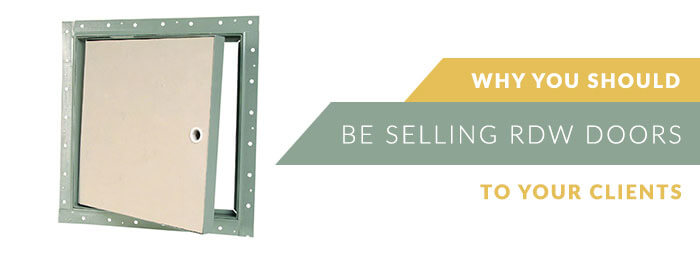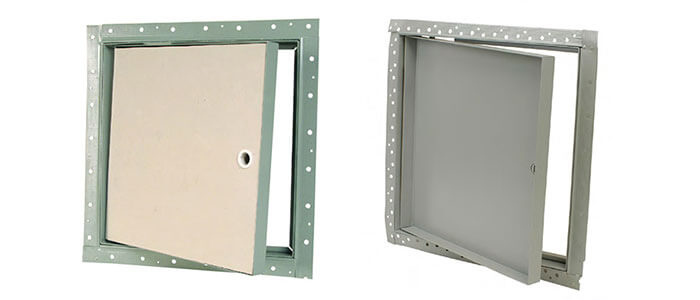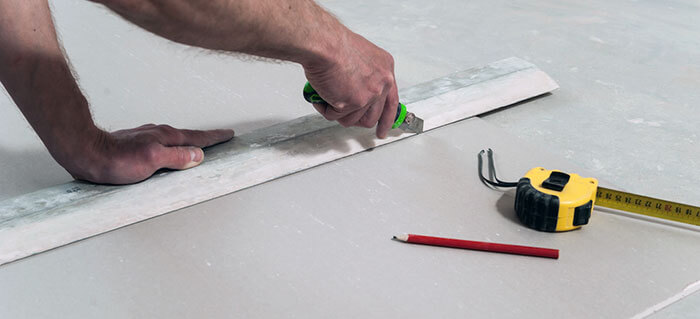
When you are carefully installing drywall, the last thing you need is an access door throwing off the continuity of your project. Metal-paneled doors are durable, but they can become an eyesore outside an industrial environment. A recessed drywall (RDW) door allows you to maintain a clean, smooth finish around an electrical panel or any other area requiring an access door.
The face of an RDW door is designed to accept a drywall panel to match the surrounding surface. A drywall bead around the edge of the door allows you to conceal the flange completely with cement. By painting the panel of a RDW door, you can transform an access door from an eyesore into another smooth area of the surface space.

Access doors are sometimes set in awkward locations in a room. By using a RDW door, you can help camouflage an access door set very high, very low, or dead center on a wall. Painting over the drywall panel with the wall color matches the door exterior exactly to the rest of the room. For design purposes, this makes RDW doors a much more versatile and attractive option than typical gray access doors.
Even if the access door is eventually covered up, the flush design of a RDW door means a painting or sign will rest over the door as if it were a plain section of wall. The stainless steel latch sits flush to the wall and allows for easy opening. With the exception of this very unobtrusive door handle, a painted RDW door all but disappears when properly installed.
The design of a RDW door helps you create a seamless look. The concealed pins allow you to integrate the door frame into the wall before drywalling begins. The flanges are easily concealed with drywall cement because of the bead that surrounds the door. Plus, RDW doors come in a variety of sizes so you can match one exactly to the access opening.

The most significant drawback of a RDW door is having to fit a drywall panel into the recess. In order to create the desired seamless look, a panel of drywall must be cut to fit the door recess exactly. Depending on the project, this may not be convenient or feasible for you. In this case a faster, easier option is to purchase a RDW door with a square of drywall already installed.
Installing a RDW door may be difficult if you are not drywalling the surrounding area. It would require the removal and replacement of surrounding drywall.
Another potential problem is the extra space a RDW door occupies inside the access box. This kind of door extends an inch into the access box because of the area where the drywall panel sits. In most situations this won’t make a difference, but you will have to consider the interior layout of the box you are working with to determine if this door is a good choice.
A RDW door is a sensible option for any area where an access door should blend into the surrounding wall. It is designed for easy installation when you are drywalling the surrounding area. The concealed pins and drywall bead make it easy to camouflage, and even its handle is made to sit flush when properly installed. The paintable panel and seamless look gives the RDW door broader design appeal than the typical metal access door.
The depth of the access box in question should be examined before deciding if a RDW door is the right choice. If cutting a square panel to fit the recess is not the best option for your project, consider buying an access door with the drywall panel already installed. Once installed and painted, a RDW should provide you with a smooth and clean look over any access opening set into the wall.